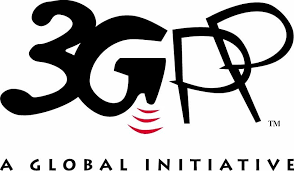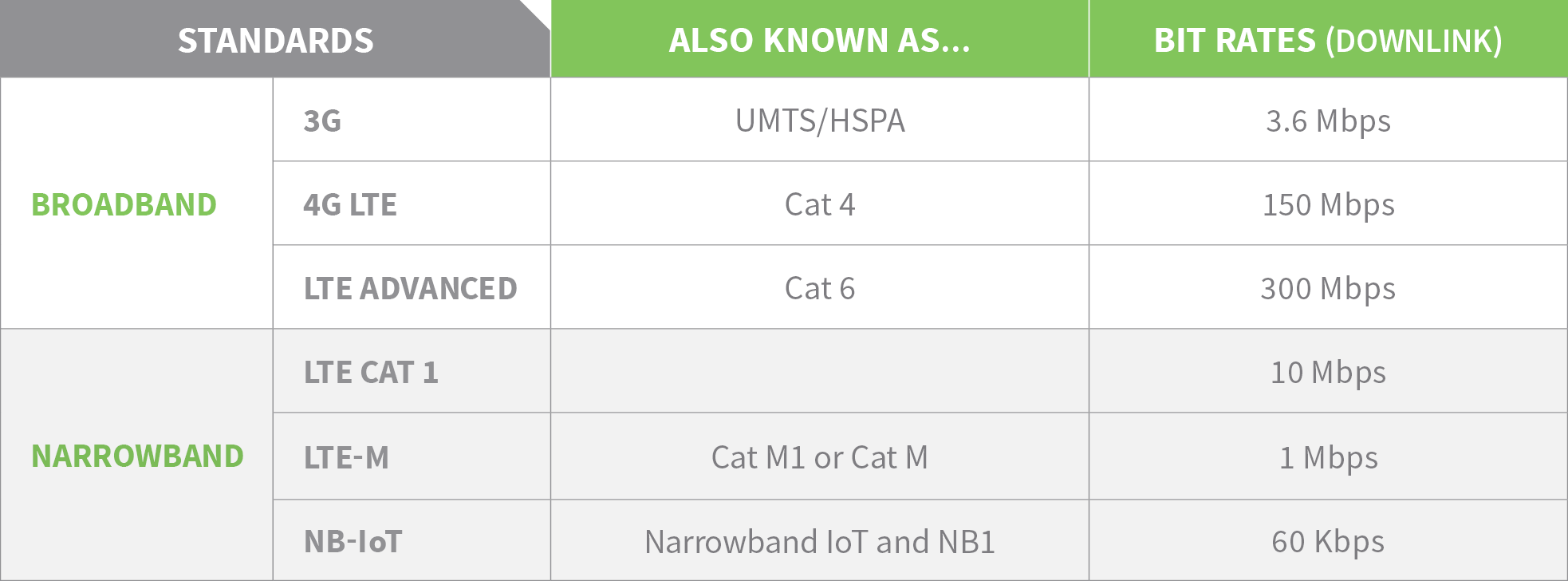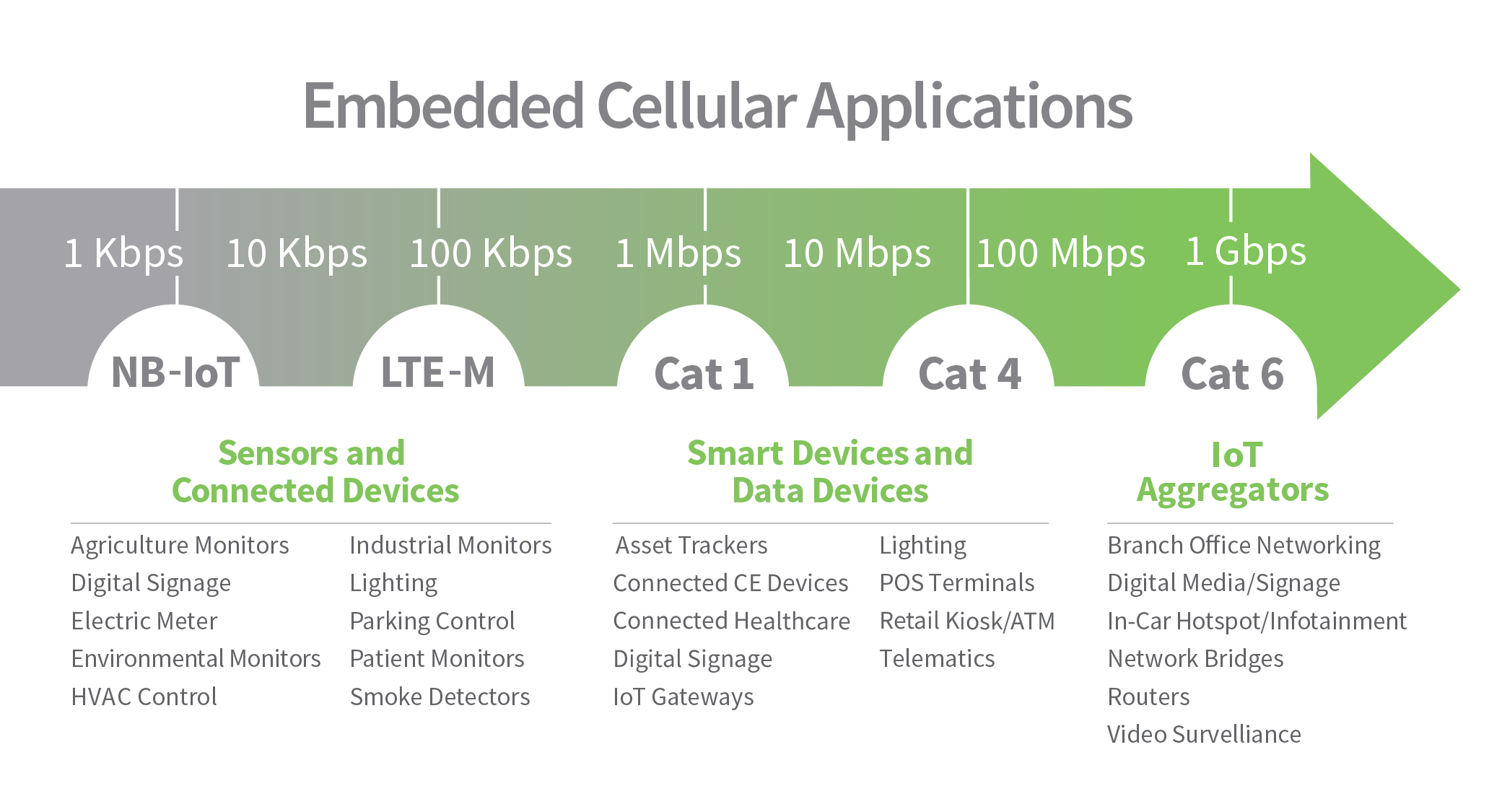The 3GPP (3rd Generation Partnership Project) is a global consortium of various telecommunications associations. In the late 1990s, the 3GPP was organized to establish 3G cellular specifications based on evolved Global System for Mobile Communications (GSM) specifications within the scope of the International Mobile Telecommunications-2000 project of the International Telecommunication Union (ITU).
late 1990s, the 3GPP was organized to establish 3G cellular specifications based on evolved Global System for Mobile Communications (GSM) specifications within the scope of the International Mobile Telecommunications-2000 project of the International Telecommunication Union (ITU).
Since then the scope of 3GPP standards have expanded to cover 4G LTE and evolving standards like LTE Cat 3, LTE Cat 4 and LTE Cat 1. Carriers such as Verizon, AT&T and Vodafone are rapidly rolling out networks for LTE-M and NB-IoT.
Let's sort it out:

Example Applications for Narrowband Cellular
These new narrowband standards have made cellular relevant for applications that only need to connect once in a while and send small packets of data. The makers of remotely deployed sensors and equipment that operates in far flung places, often running on battery or solar power, now have a cellular connectivity option. Digi XBee Cellular simplifies embedded cellular connectivity by reducing or eliminating the time and cost of development and certification to incorporate cellular technology into a wide array of applications.
- Lighting for streets and parking lots: centrally manage and control city-wide networks of street lights.
- Oil and Gas and industrial process controls: keep an eye on remote equipment, such as tank levels, temperature, pressure and other sensors.
- Variable message signage (VMS): applications ranging from signage to traffic sensors.
- Environmental monitoring: solar panels can report power generation hourly to a cloud-based applications.
